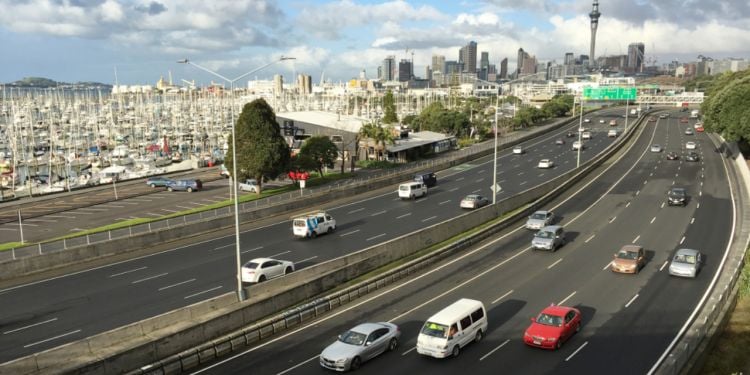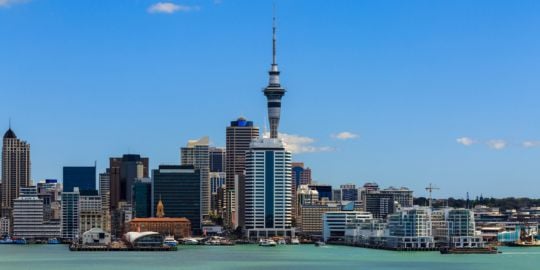Getting around Auckland

Getting around Auckland can be a challenge – even for those born there! However, with a little planning, you can usually find an efficient way to get from A to B. Read through our guide to transportation in Auckland to determine what options might best suit you.
Driving in Auckland
Owning a car in Auckland is very convenient, as it is a sprawling city with limited public transport to some areas. However, driving in Auckland can be challenging due to heavy traffic during peak hours, which can lead to congestion and delays. Commuters should be aware of the city's numerous one-way streets and the need to regularly check for changes in road layouts due to construction and detours.
It's also important to be aware of the city's strict parking regulations, including time limits and permit requirements, and be mindful of the frequent bus lanes that operate during specific hours. Additionally, it's advisable to familiarize yourself with New Zealand's unique road rules, such as giving way to vehicles on the right and driving defensively to ensure the safety of all road users. For more detailed information on road rules in New Zealand and converting your license, check out our Driving in New Zealand article.
A personal car is by far the most common way for Aucklanders to commute. If you are working outside of the CBD, parking is easy to come by and often free. There are also carpool lanes that are restricted to buses, motorbikes, and cars with two or three occupants (you'll see signs saying “T2” or “T3”.)
A scooter or moped can be a great option if you are not covering long distances, as they allow you to avoid traffic and parking issues.
Public transport in Auckland
Auckland's public transport is notoriously lacking when it comes to getting from one suburb to another. There are some exceptions depending on where you live, but you will often find that your commute will more than double in duration and involve at least one transfer if you want to get from, for example, Point Chevalier to Onehunga, which are both central suburbs. However, getting from the suburbs to the CBD is usually fairly straightforward.
Though limited compared to many overseas cities, Auckland still offers a range of public transport options for commuters, including buses, trains, and ferries. The city's public transport network is operated by Auckland Transport, and the integrated ticketing system, AT HOP, allows for seamless travel across all modes of transportation.
Buses are a popular mode of transportation in Auckland and cover a wide area of the city, with many routes operating late into the night. The train network offers frequent services between the city center and outer suburbs, as well as to the nearby towns of Papakura and Pukekohe. Ferries operate between the city center and several of Auckland's coastal suburbs and islands, providing a scenic option for travel.
For expats navigating Auckland using public transport, it's important to plan your journey in advance, as not all services run 24/7 and not all suburbs are interlinked, meaning you may have multiple transfers on your journey, which can be time-consuming. The AT website provides information on schedules, routes, and fare information, and you can also use the AT mobile app to plan your journey and track your bus or train in real time. Additionally, it's important to be aware of the rules for traveling on public transport in Auckland, such as the need to have a valid ticket or pass before boarding, and the requirement to give priority to elderly and disabled passengers.
Buses and trains frequently run at peak travel hours, and a stop near a suburban house can often be reached in less than 15 minutes of walking. However, keep in mind that the buses will often arrive up to five minutes early or ten minutes late. While Google Maps can be useful, you're better to try the Auckland Transport app or Kiwi Hub to see live updates for stops.
All the buses and trains in Auckland are accessible to those who are differently-abled. Buses will kneel if you ask and have areas put aside for wheelchairs, prams, or those who need to sit.
Pedestrian crossing lights also make noise to aid the sight-impaired. If you ever need help, just ask – Kiwis are pretty friendly and mostly happy to lend a hand. Be Accessible is an NZ organization dedicated to helping people find the most accessible options for travel and accommodation across the country.
Taxi and rideshare options in Auckland
Auckland has a range of taxi and ride-sharing options available for commuters. Traditional taxis can be hailed on the street, booked by phone or through an app, and are regulated by the New Zealand government. Fares are metered, and extra charges may apply for booking fees, wait times, and luggage.
Ride-sharing services, such as Uber, Zoomy and Ola are also available in Auckland and offer a convenient and often more affordable alternative to traditional taxis. The ride-sharing industry is also regulated in New Zealand and requires drivers to undergo background checks and vehicle inspections.
Cycling in Auckland
Cycling is a popular mode of transportation in Auckland and offers a healthy and environmentally friendly way to get around the city. There are several dedicated bike lanes and paths throughout Auckland as well as bike parks for secure parking. The city also operates a bike-share program known as AT Bike, which allows users to rent a bike at one location and return it at another.
It's important to be aware of the road rules when cycling in Auckland, including the need to wear a helmet and to follow the same rules as motorists, such as using hand signals when turning and obeying traffic lights and signs. The city also experiences variable weather conditions, so it's advisable to be prepared for rain and wind when cycling.









